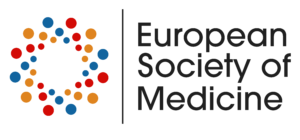Human neural stem cells (hNSCs) have potential as a cell therapy after traumatic brain injury (TBI). While various studies have demonstrated the efficacy of NSCs from ongoing culture, there is a significant gap in our understanding of freshly thawed cells from cryobanked stocks—a more clinically relevant source. The therapeutic potential of our previously validated Shef-6 human embryonic stem cell (hESC)-derived hNSC line was tested after long-term cryostorage and thawing before transplant. Immunodeficient athymic nude rats received a moderate unilateral controlled cortical impact (CCI) injury. At four weeks post-injury, 6E5 freshly thawed hNSCs were transplanted into six injection sites (two ipsi- and four contra-lateral) with 53.4% of cells surviving three months post-transplant. Most hNSCs were engrafted in the meninges and the lining of lateral ventricles, associated with high CXCR4 expression and a chemotactic response to SDF1alpha (CXCL12). While some expressed markers of neuron, astrocyte, and oligodendrocyte lineages, the majority remained progenitors, identified through doublecortin expression (78.1%). Importantly, transplantation resulted in improved spatial learning and memory in Morris water maze navigation and reduced risk taking on the elevated plus maze. To address potential mechanisms of action, we identified an increase in ipsilateral host hippocampus cornu ammonis (CA) neuron survival, contralateral dentate gyrus (DG) volume, and DG neural progenitor morphology as well as a reduction in neuroinflammation. Together, these findings validate the potential of hNSCs to improve function after TBI and demonstrate that long-term biobanking of cells and thawing aliquots before use may be suitable for clinical deployment.

- Journal
- Articles
- Author Center
- Society

Editorial Board
The ESMED Editorial Board is comprised of experts from around the world.

Meet the community
See what our members have been working on.

Membership
Join ESMED for access to member-only content, congress discounts, and more.
- Membership

